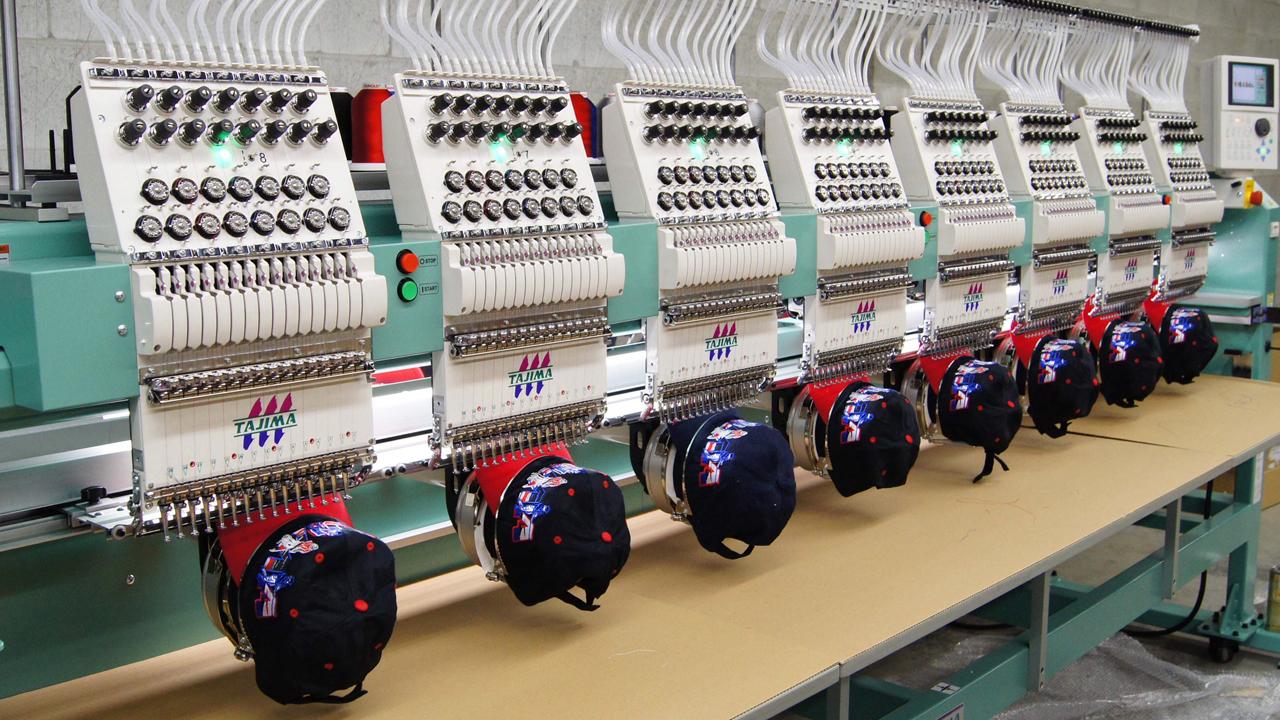Do you feel like sometimes you are frantically trying to sew out customer designs? Juggle digitized files, get products out and sell all at the same time? Here are tips for better embroidery management!
1. Write Out Your Workflow – Step By Step.
Often times, you end up running (or sewing) with your head cut off because there are so many aspects of the job you need to handle. Take a second to write out your step by step process. Even if it feels redundant. For instance, first comes sales input, then customer size approval, ordering garments, digitizing artwork, sewing out a sample, proofing to customer, hooping, sewing, cutting backing, folding, and finally shipping. When you can isolate different stages you can begin to run a cleaner business.
2. Make Sure Customers Have a Better Understanding of Embroidery.
Customers are used to seeing how “easy” it looks to embroider a hat at that island in the mall. They expect to order garments and think a simple button does all the work. Not so fast! Embroidery is delicate. There are limitations. It is slow. There are stages, and a simple button does not do all the work. Spend time in your sales process educating your customer on embroidery so they understand how logos will actually look when sewn. Get them to understand you have to “assign” a thread to every pixel of their artwork, and it is not as easy as one would think. When you have better-educated customers upfront, they are easier to work with!
3. Under-promise, Over-deliver.
Yes, you’ve been taught this before but ESPECIALLY with embroidery. Embroidery takes a lot longer than screen printing or sign printing, so give your embroidery team some cushion when promising due dates. Thread breaks? Machine acting up? You don’t want to be under the gun.
The same goes for how a logo will look. Let the customer that it will be virtually impossible to nail every detail with their design, but that you’ll try your best and show them a sample.
4. Price Smart – Embroidery Can Eat Your Profit.
Printing 300 – $2.00 shirts an hour is a lot different than sewing 20 – $100 North Face Jackets. You should be pricing embroidery based on complexity. Make sure you charge for digitizing either in your cost of each item, or upfront, and make sure that revisions are not free. If they cost you, you should be charging for it! Even if you are skilled enough to do your own digitizing. Nicer garments should be charged at a premium because it should take into account your risk of ruining an item and having to replace it.
5. Take Pictures – Stay Organized.
Did you sew that out at 88% scale? Which navy thread did you use last time? Make sure you have a strong system to record your past jobs. Perhaps take a photo with your smartphone and upload it to the invoice so you know exactly how it looked for future orders. You can even send real sew out proofs to your customers to get approval.
6. Sub Out Hard Jobs!
The longer your machine runs, the more thread you are putting down, the more chance there is for error. Although it might feel great sewing out that 30,000 stitch full-back, be careful because your 6 head machine has exponentially more chances for thread breaks and jumps. There are massive embroidery shops that are experts in larger sew outs. Don’t be afraid to charge a premium and send it to the “pros” if you are not there yet. There is no shame in sending artwork out for digitizing either because the right digitizers know how to digitize friendly files for your machinery.
7. Have a Strong File Storage System.
Embroidery files are funky. They have weird file names, open with special programs and if you mix them up, you can really make some costly mistakes. Make sure you store your files directly with the jobs that you are producing. If you update that file, now you have a great way to track them.
8. Hire Help to Do the Easy Stuff.
You want those embroidery machines running nonstop. In embroidery, we can delineate skilled and unskilled labor. Digitizing, hooping, setting up, and running the machines can require a lot of skill. Cutting backing, folding, unhooping, and unpackaging are teachable. If you can keep those machines running just 15% faster, it more than pays off an hourly employee that can help you. Plus those machines are boring to watch, the company is not bad.
9. Keep that Single Head Running.
If you have a single head machine, alongside a 6 or 4 head machine, it might seem silly to run the single head. It can actually turn into your little trooper. Knock out those personalization runs, or those tricky backpacks. You don’t want any downtime on your embroidery heads, so plan out how to keep them running simultaneously.
10. Sew All Hats, then All Flats.
Setting your machine for different garments is a pain. It eats out of your production time. Sew all your hats first even if due dates are not exactly lined up, then switch to flats or different hoop setups. Make it as easy on your production team as possible. Stagger jobs with difficult and easy ones so they don’t feel like they have a never-ending battle with your embroidery jobs.
Image source: BiGHORN DESiGN STUDiO


0 Comments